Magnetic flip plate level gauges, also known as magnetic level indicators, are widely used in industrial processes for monitoring and controlling liquid levels in tanks and vessels. These devices offer reliable, continuous level measurement, even in challenging environments. To ensure optimal performance, it’s important to carefully select a magnetic flip plate level gauge that suits your specific application. Here are the key factors to consider during the selection process:
1. Measurement Range (Span)
The measurement range of the gauge should match the actual liquid level requirements of your process. The selected device must be capable of covering both the highest and lowest levels the tank or vessel will experience. Choosing a gauge with the right range ensures accurate measurement and prevents potential issues like overflow or underflow.
For instance, if you need to monitor a tank that holds up to 5 meters of liquid, the device’s range should be slightly larger to accommodate any fluctuations and ensure full coverage.
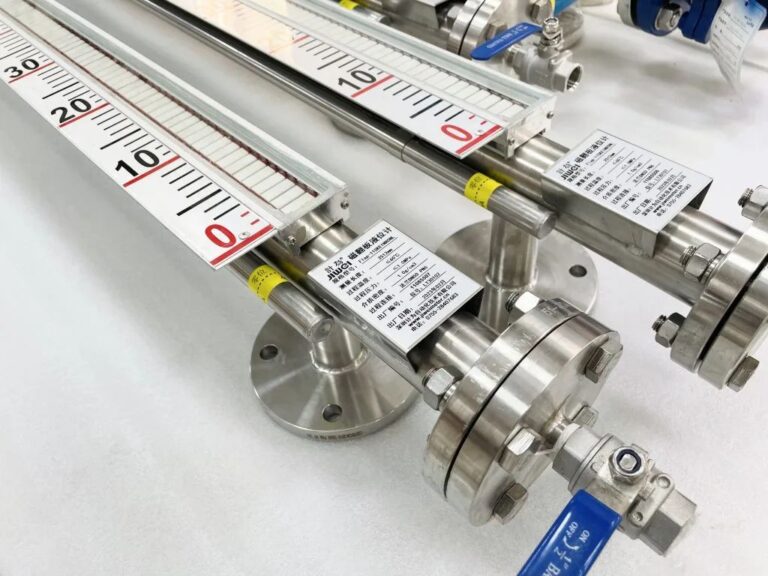
2. Operating Pressure and Temperature
It’s essential to understand the pressure and temperature conditions under which the level gauge will operate. The gauge must be compatible with the maximum pressure and temperature ratings of the process.
- Pressure: In processes where high pressure is involved, the level gauge must have a high-pressure rating to avoid damage or failure.
- Temperature: High temperatures can impact the materials used in the gauge, so select a device that can withstand the process temperature without compromising functionality. High-temperature materials like stainless steel or PTFE may be required for harsh conditions.
Selecting a gauge outside its recommended temperature and pressure range can lead to inaccurate readings, equipment degradation, or even safety hazards.
3. Properties of the Liquid (Density, Viscosity, and Corrosiveness)
Understanding the characteristics of the liquid being measured is crucial for selecting the right level gauge. These properties include:
Density: The float mechanism inside the magnetic level indicator relies on liquid density to function properly. A mismatch between the float’s density and the liquid’s can lead to faulty readings. For instance, lower-density liquids will need a float designed to handle lighter substances.
Viscosity: High-viscosity liquids may affect the smooth movement of the float. In such cases, it’s necessary to select a model with enhanced mechanical design to overcome the resistance from thick fluids.
Corrosiveness: If the liquid is corrosive, such as strong acids or alkalis, the material used for the gauge (especially the float chamber and connections) must be resistant to chemical corrosion. Common materials for such environments include 316L stainless steel or plastic coatings like PTFE (Teflon).
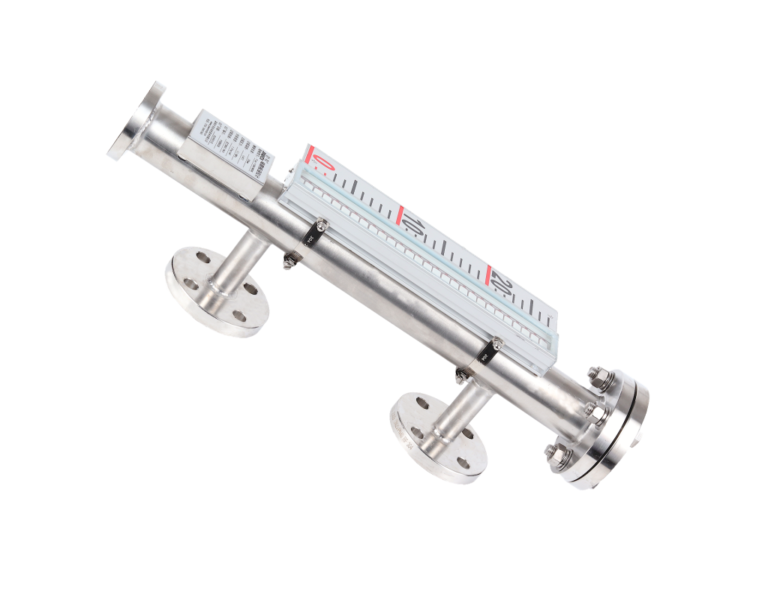
4. Connection Type
The level gauge’s connection to the tank or vessel must be suitable for the existing setup. Common connection methods include:
- Flanged connections: These are widely used in industrial applications and are compatible with high-pressure systems.
- Threaded connections: Used for lower pressure applications and in scenarios where installation space is limited.
- Welded connections: These are permanent and used in highly secure or safety-critical environments.
Ensure that the connection type matches the process piping or tank connections in terms of both size and pressure ratings.
5. Material Selection
Choosing the appropriate materials for the float, indicator chamber, and connections is critical for long-term durability and reliability. Material selection depends heavily on the type of liquid, operating temperature, and environmental conditions.
- Stainless steel (304 or 316): Commonly used due to its resistance to corrosion and ability to handle high temperatures and pressures.
- PVC or PTFE coatings: Suitable for corrosive or aggressive liquids, providing excellent chemical resistance while maintaining mechanical strength.
Selecting the wrong materials can lead to rapid wear, contamination of the process, or even equipment failure.
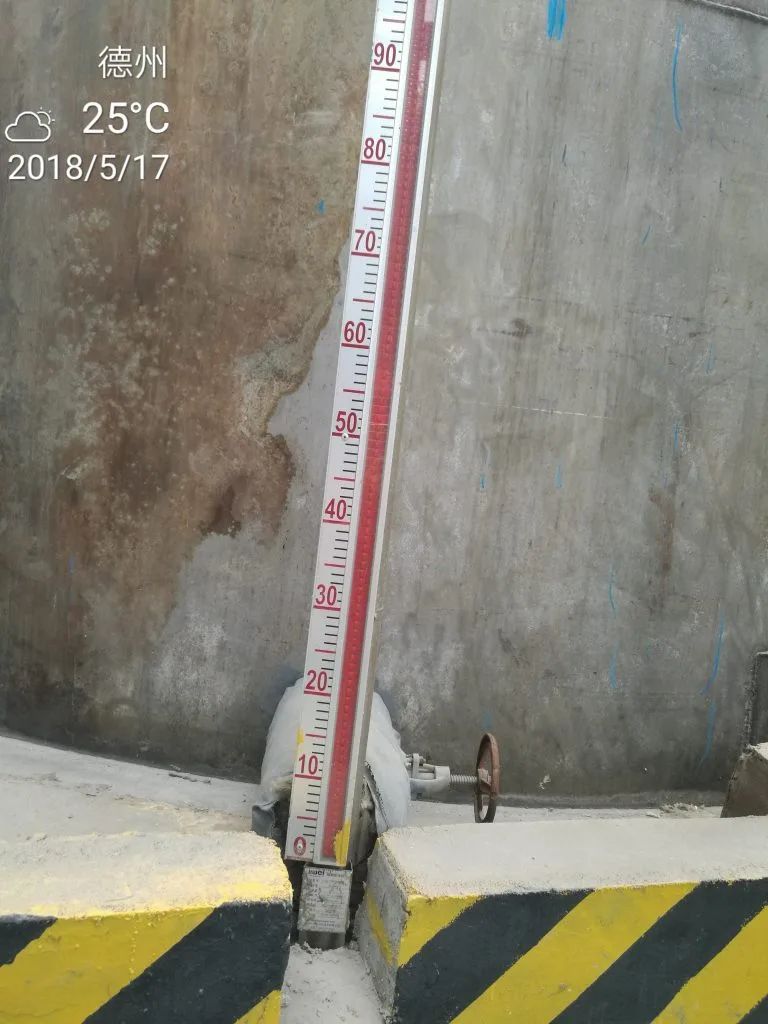
6. Installation Orientation
Magnetic flip plate level gauges can be installed in different orientations depending on the tank design and operational requirements:
Side-mounted: This is the most common orientation, where the gauge is mounted vertically along the side of the tank or vessel. This setup provides easy access for monitoring and is suitable for most liquid level applications.
Top-mounted: For tall tanks or vessels, top-mounted installations may be preferred. This setup is ideal for situations where side access is limited or where side-mounted devices would be exposed to harsh conditions.
Correct installation orientation is crucial to ensuring the float’s smooth movement and accurate level measurement.
7. Explosion-Proof and Safety Requirements
In hazardous environments, especially in industries dealing with flammable or explosive materials (such as petrochemical or gas processing), explosion-proof certification is mandatory. The level gauge should meet the appropriate safety standards for use in hazardous zones, such as ATEX or IECEx certification.
- Explosion-proof gauges: These are specially designed with protective casings and electrical isolation to prevent sparks or overheating in explosive atmospheres.
Failure to select an explosion-proof device in such environments can lead to catastrophic accidents, so this is a vital consideration for safety-critical processes.
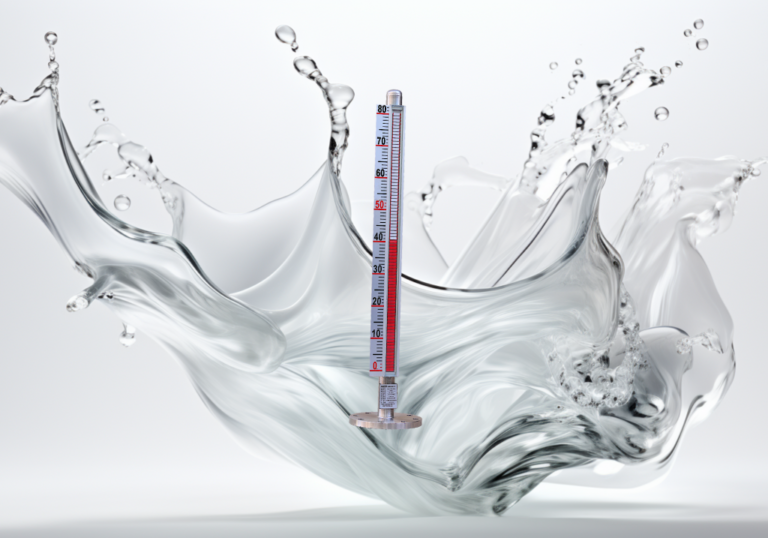
8. Additional Features (Signal Output and Alarms)
Modern magnetic flip plate level gauges often come with additional features that enhance functionality and integration into automated systems:
Signal Output (4-20mA): If your process requires remote monitoring, selecting a gauge with a signal output that communicates with a control system (PLC, DCS, etc.) is essential. The 4-20mA signal is industry standard for transmitting continuous level data to control rooms.
High/Low-Level Alarms: Some applications require alarms when the liquid reaches critical levels. A magnetic level gauge with integrated alarm switches can be configured to trigger warnings or automatic shutdowns if the liquid level exceeds pre-set thresholds.
These features are critical in ensuring that operators can respond to level fluctuations promptly and prevent potential overflow, equipment damage, or process disruptions.
9. Accuracy Requirements
Depending on the process, the required accuracy of the level gauge may vary. For high-precision processes, such as in pharmaceutical or fine chemical industries, higher accuracy is paramount.
Standard magnetic level indicators offer good accuracy for general applications, but for critical processes, you may need to select a model that includes calibration features or a more precise float mechanism.
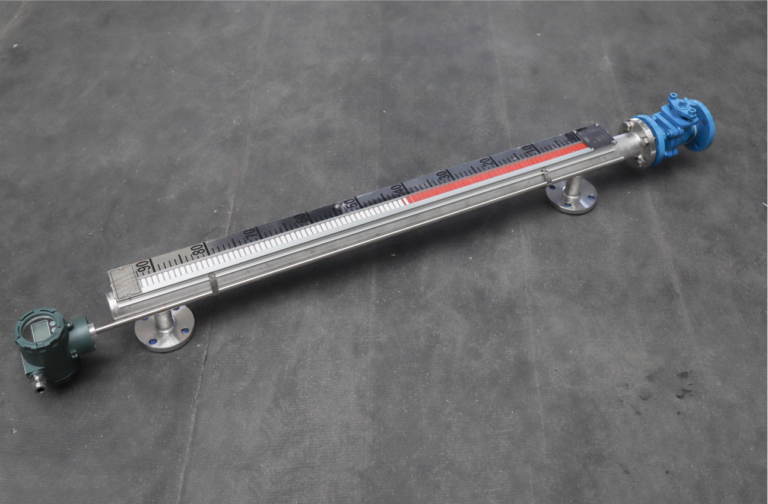
Conclusion
Selecting the right magnetic flip plate level gauge involves careful consideration of multiple factors, including the nature of the process, operating conditions, liquid characteristics, and safety requirements. A thorough evaluation ensures that the chosen gauge will provide reliable performance, safety, and accuracy for your specific application.
By taking the time to assess these key considerations, you can enhance the efficiency of your liquid level monitoring system and prevent potential operational issues down the line.
